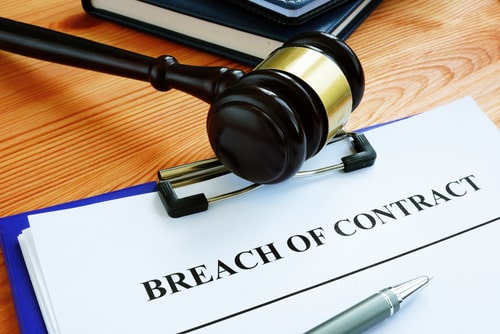Filing a breach of contract lawsuit is a serious matter. If you’re the plaintiff, your legal rights – including the right to monetary damages – hang in the balance. Meanwhile, as the defendant, you could be ordered to pay significant damages if you lose.
No matter what side you’re on, a lawsuit could damage your reputation or destroy a long-standing business relationship. Whether you’re the plaintiff or defendant, our New York business attorneys can represent you. Here, we explain what has to be established for a plaintiff to succeed.
What Is a Contract Under the Law?
Perhaps you’re being sued over a promise you made, but you don’t believe it constitutes a contract. A contract is a legally enforceable agreement between parties. A valid contract requires an offer, an acceptance of that offer, and consideration. “Consideration” is an exchange of something of value between the parties.
A breach of contract happens when one party fails to perform as agreed in the contract. But several specific elements must be shown under New York law.
The Required Elements of a Breach of Contract Lawsuit
If you’re the plaintiff in a breach of contract lawsuit, the burden is on you to prove all necessary elements of the claim. Meanwhile, if you’re the defendant, you will want to refute as many such elements as you can. Here are the critical elements in this type of case.
That a Valid Contract Existed
The basic definition of a contract is given above. Some contracts are oral, and oral contracts may be enforceable. However, under what’s known as the Statute of Frauds, certain contracts must be in writing. A New York contract attorney can explain whether the agreement at issue is a valid contract.
Performance by the Plaintiff
The plaintiff must be able to show that it performed as agreed under the contract. Alternatively, the plaintiff can demonstrate that there was a legally valid reason it didn’t have to perform. In the latter scenario, the plaintiff must provide evidence that it was excused from performance. Tell a New York contract lawyer what you did or didn’t do under the contract for a full analysis.
The Other Party Failed to Perform Under the Contract
This is the essence of the breach itself. However, the breach must be material, rather than minor. “Material” means that the breach goes to the heart of the agreement. It cannot be a trivial violation. An example of trivial may be delivering a shipment of non-perishable goods an hour later than promised. Note that a “time is of the essence” clause could make such a delay material.
Another way of describing a material breach is that it defeats the purpose for which the contract was originally created.
Damages
Lastly, the plaintiff must show that the breach of contract caused it to incur damages. Damages are generally intended to make the injured plaintiff whole, and they usually fall into one of these two categories.
Direct damages are the direct result of the defendant’s breach. They flow naturally and foreseeably from the breach itself. A simple example is paying a contractor to build a patio, which is never built. The direct damages are the amount you paid the contractor.
Consequential damages are damages that would probably have been considered when the parties entered into the contract. Lost profits and incidental losses may be examples of consequential damages.
A New York business lawyer will help you demand all damages to which the law entitles you.
We’re Ready to Advocate for You, Regardless of Which Side of the Case You’re On
If you’re the plaintiff in a breach of contract lawsuit, we will work to thoroughly prove each required element. Conversely, if you’re the defendant, our team will argue against each element of the plaintiff’s case. It may be possible to settle the lawsuit outside of court using mediation or other approaches.
Regardless, you can rely upon our New York business law attorneys to fight for your best interests. Call Rosenbaum & Taylor today.







